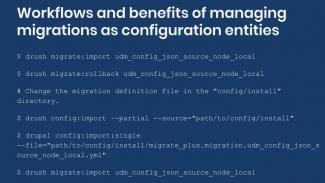
Workflows and benefits of managing Drupal migrations as configuration entities
In the last blog post we were introduced to managing migration as configuration entities. Today, we will also show a recommended workflow for working with migration as configuration.

Defining Drupal migrations as configuration entities with the Migrate Plus module
Today, we are going to talk about how to manage migrations as configuration entities. First, we will explain the difference between managing migrations as code or configuration. Then, we will show how to convert existing migrations and options.
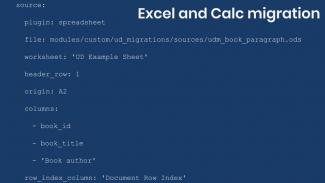
Migrating Microsoft Excel and LibreOffice Calc files into Drupal
Today we will learn how to migrate content from Microsoft Excel and LibreOffice Calc files into Drupal using the Migrate Spreadsheet module. We will present how to configure the module for spreadsheets with or without a header row. There are two example migrations.
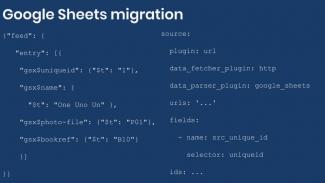
Migrating Google Sheets into Drupal
Today we will learn how to migrate content from Google Sheets into Drupal and give instructions on how to publish them in JSON format to be consumed by the migration.
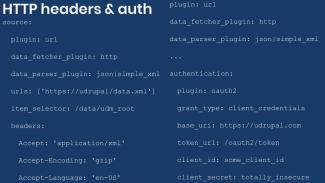
Adding HTTP request headers and authentication to remote JSON and XML in Drupal migrations
In the previous two blog posts we learned to migrate data from JSON and XML files. To provide this functionality the Migrate API leverages the Guzzle HTTP Client library. Usage requirements and limitations will be presented.
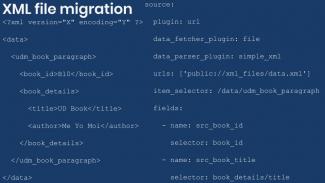
Migrating XML files into Drupal
Today we will learn how to migrate content from a XML file into Drupal using the Migrate Plus module. The example includes node, images, and paragraphs migrations. Let’s get started.

Migrating JSON files into Drupal
Today we will learn how to migrate content from a JSON file into Drupal using the Migrate Plus module. The example includes node, images, and paragraphs migrations. Let’s get started.

Migrating CSV files into Drupal
Today we learn how to migrate content from a comma-separated value (CSV) file into Drupal, using the latest version of the Migrate Source CSV module and the CSV PHP library by the PHP League. We will show how configure the source plugin to read files with or without a header row and also cover stream wrappers.
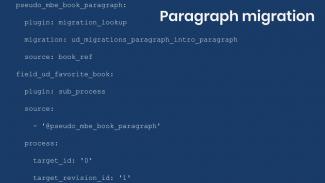
Introduction to paragraphs migrations in Drupal
Today we will present an introduction to paragraphs migrations in Drupal. The example consists of migrating paragraphs of one type, then connecting the migrated paragraphs to nodes.
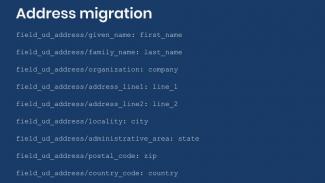
Migrating addresses into Drupal
Today we will learn how to migrate addresses into Drupal. The address components can change per country, and the way to store those components also varies per country. These and other important considerations will be explained.
Pagination
- Previous page
- Page 3
- Next page

